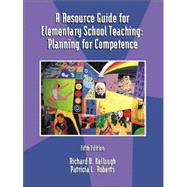
| PART I ORIENTATION TO ELEMENTARY SCHOOL TEACHING AND LEARNING | 1 | (136) | |||
|
3 | (28) | |||
|
31 | (28) | |||
|
59 | (32) | |||
|
91 | (46) | |||
| PART II PLANNING FOR INSTRUCTION | 137 | (100) | |||
|
139 | (48) | |||
|
187 | (50) | |||
| PART III STRATEGIES, AIDS, MEDIA, AND RESOURCES FOR EFFECTIVE INSTRUCTION | 237 | (114) | |||
|
239 | (28) | |||
|
267 | (31) | |||
|
298 | (26) | |||
|
324 | (27) | |||
| PART IV ASSESSMENT AND PROFESSIONAL DEVELOPMENT | 351 | (78) | |||
|
353 | (43) | |||
|
396 | (33) | |||
| Glossary | 429 | (6) | |||
| Index of Children's Books, Authors, and Illustrators | 435 | (2) | |||
| Name Index | 437 | (4) | |||
| Subject Index | 441 |
The New copy of this book will include any supplemental materials advertised. Please check the title of the book to determine if it should include any access cards, study guides, lab manuals, CDs, etc.
The Used, Rental and eBook copies of this book are not guaranteed to include any supplemental materials. Typically, only the book itself is included. This is true even if the title states it includes any access cards, study guides, lab manuals, CDs, etc.